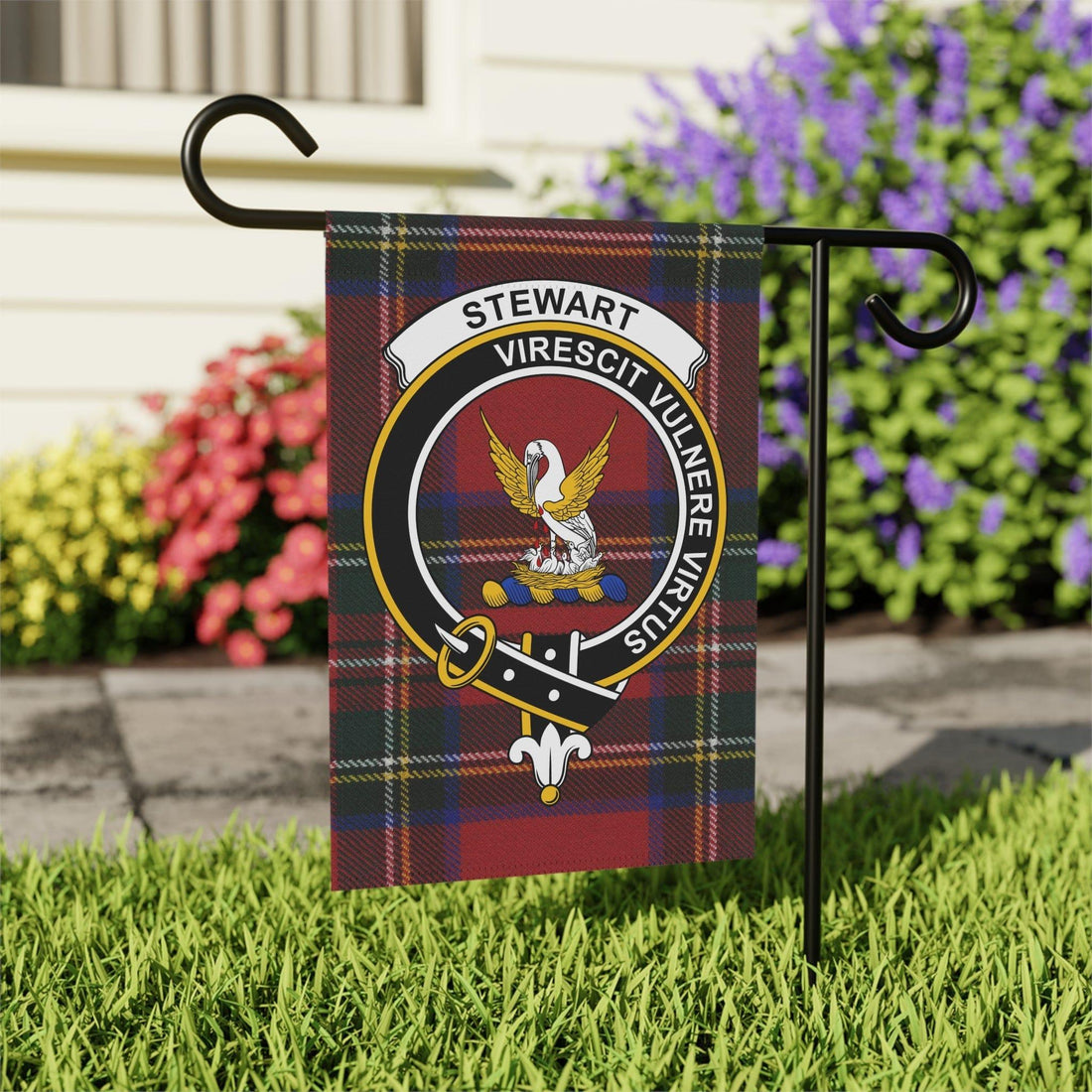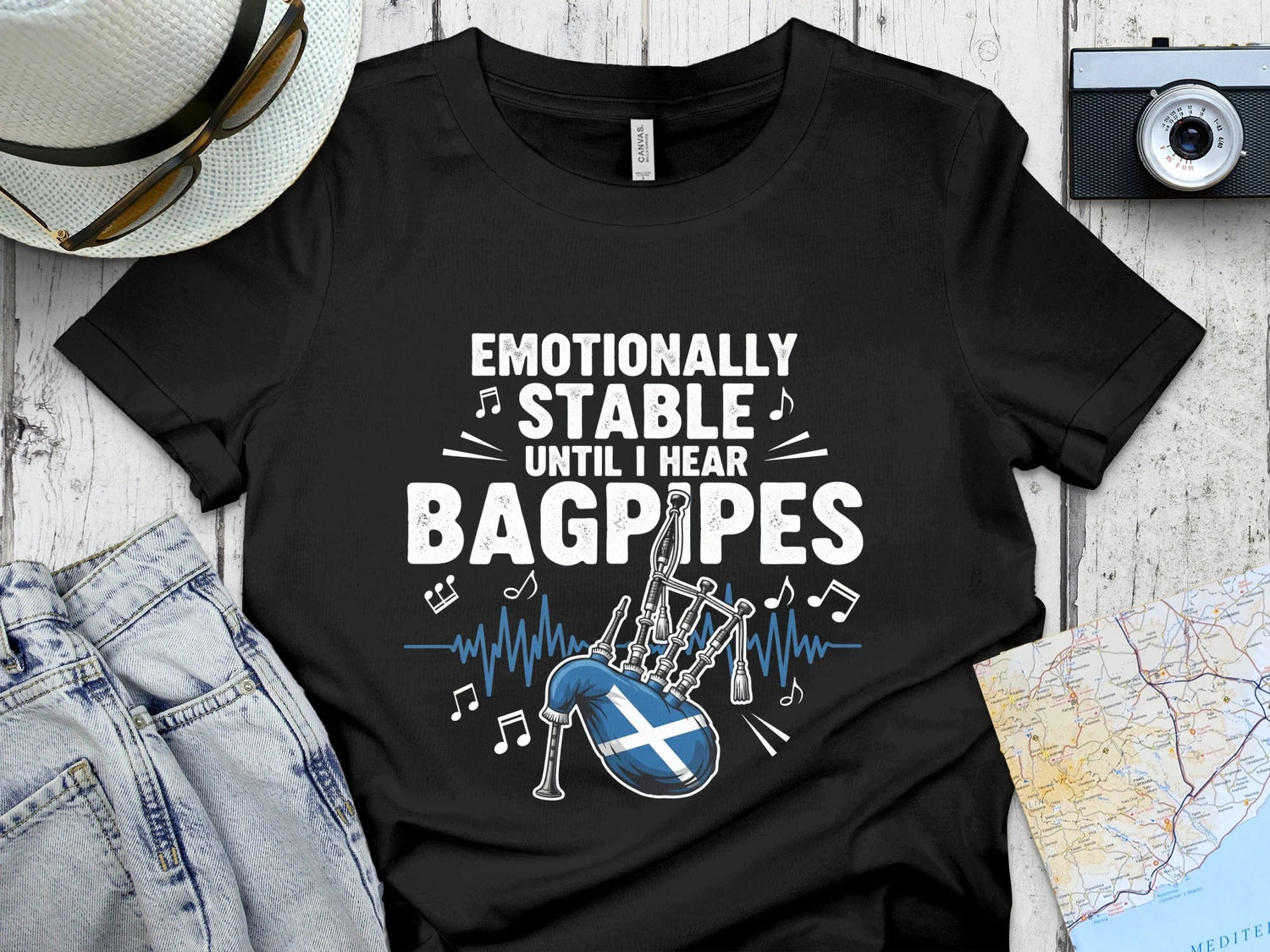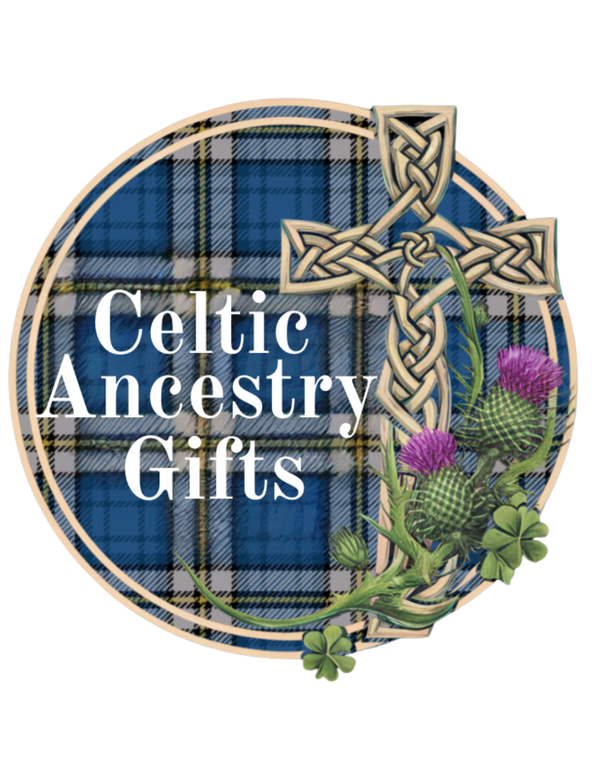
Clan Stewart — Scotland’s Royal Bloodline and the Heart of a Nation
Share
1️⃣ Introduction
Few names stir the soul of Scotland like Stewart — or as it is often spelled, Stuart. To speak it is to speak of kings and queens, of rebellion and romance, of a clan that was not only noble but royal. From the lochs of the Highlands to the throne of Great Britain, the Stewarts have shaped the destiny of nations.
Theirs is a story of glory and grief, triumph and tragedy — of a family that rose from medieval stewards of the Scottish crown to become the ruling dynasty of Scotland, England, and Ireland. For those who carry the name today, Stewart is more than a surname; it is a legacy of leadership, loyalty, and enduring courage.
This is the story of Clan Stewart, Scotland’s royal house and one of the most celebrated lineages in all of Celtic history.
2️⃣ History & Origins
The Earliest Stewards of Scotland
The Stewart name originated from the occupational title steward — the official who managed the affairs of a royal or noble household. The title came into Scotland from Norman-French and Anglo-Saxon influences in the 12th century.
The first recorded bearer of the name was Walter Fitz Alan, who came north from Shropshire in England with King David I around 1136. Walter was appointed High Steward of Scotland, responsible for overseeing the royal estates and revenues. His title — Steward — became hereditary, and over generations, his descendants adopted it as a family name: Stewart.
The Gaelic Connection
Although the title was Norman in origin, the Stewarts quickly became thoroughly Scottish. They intermarried with Gaelic nobility and absorbed the language and customs of the Highlands. In Gaelic, the clan’s name is Stiùbhart (pronounced Stee-varrt). Over time, “Stewart” took on both Norman precision and Gaelic pride — a fitting emblem of the blending of cultures that shaped medieval Scotland.
From Stewards to Kings
In the 14th century, the destiny of the Stewarts changed forever. Walter Stewart, 6th High Steward, married Marjorie Bruce, the daughter of King Robert the Bruce. Their son became Robert II of Scotland, crowned in 1371 — the first monarch of the House of Stewart.
For more than three centuries, the Stewarts ruled Scotland, and later, after the Union of the Crowns in 1603, England and Ireland as well. Their dynasty produced figures of legend — from the gallant James IV and Mary, Queen of Scots, to the tragic Charles I and the romantic Bonnie Prince Charlie.
The Stewarts’ reign brought both brilliance and sorrow, but it remains the most celebrated royal lineage in Scottish history.
3️⃣ Spelling Variations & Related Names
Stewart vs. Stuart
Both spellings — Stewart and Stuart — are correct and historically authentic. The original Scottish spelling was Stewart, reflecting its English etymology. The French form, Stuart, was adopted by Mary, Queen of Scots during her years in France, as the French alphabet lacked the letter “w.”
Since then, both spellings have continued in use. The royal line often used Stuart, while Stewart remained common among the wider clan families in Scotland.
Other Variants and Septs
Due to the vast influence of Clan Stewart, many families became affiliated septs under its banner, particularly in the Highlands and Isles. Associated or related names include:
-
Steuart
-
Steward
-
Steuartson
-
MacWalter or MacWalters (descendants of Walter, the first Steward)
-
Stodart
-
Stitart
-
Stiùbhartach (Gaelic forms)
Branches of the clan also developed distinct regional identities, including:
-
Stewarts of Appin — fierce Highland warriors and loyal Jacobites.
-
Stewarts of Atholl — powerful Perthshire family linked to the Dukes of Atholl.
-
Stewarts of Galloway — Lowland line with strong royal connections.
-
Stewarts of Bute — whose chiefs became the Marquesses of Bute.
-
Stewarts of Lennox — another royal branch, ancestors of Henry, Lord Darnley.
Each branch contributed its own chapter to the Stewart legacy, making it one of the most widespread and influential clans in Scotland.
4️⃣ Landmarks & Regions Associated with Clan Stewart
Renfrewshire — The Cradle of the Stewarts
The Stewarts first settled in Renfrewshire, in western Scotland, where Walter Fitz Alan established his estates in the 12th century. The town of Renfrew became known as “The Cradle of the Royal Stewarts.” From here, their influence spread across Scotland, from Lowlands to Highlands.
The Highlands — Appin and Atholl
The Stewarts of Appin, descended from Sir John Stewart of Lorn, became one of the most famous Highland branches. Their lands lie among the rugged beauty of Argyllshire, stretching from Glen Creran to Loch Linnhe. The Appin Stewarts were fierce Jacobites, known for their courage at Culloden and immortalized in Scottish ballads and literature.
In Atholl, the Stewarts became great landowners and noblemen, holding titles such as Earls and later Dukes of Atholl. Their influence over Perthshire was immense, shaping both political and cultural life in the region.
Castles and Seats
Clan Stewart’s legacy can be traced through some of Scotland’s most iconic castles:
-
Stirling Castle — often a royal residence of the Stewart kings.
-
Doune Castle — built by Robert Stewart, Duke of Albany.
-
Dumbarton Castle — an ancient stronghold of the Lennox branch.
-
Inveraray Castle — later linked to the Stewarts through marriage with Clan Campbell.
-
Mount Stuart House on the Isle of Bute — a magnificent 19th-century mansion still associated with the Marquesses of Bute, direct descendants of the royal line.
Each of these sites carries centuries of clan memory — stone upon stone telling stories of triumph, tragedy, and timeless pride.
5️⃣ Migration & Modern-Day Presence
The Jacobite Risings
The 17th and 18th centuries brought the greatest tests of loyalty for the Stewarts. After the deposition of King James VII of Scotland and II of England in 1688, the Jacobite movement emerged, seeking to restore the Stewart monarchy.
Many Highland branches — particularly the Stewarts of Appin — joined the risings of 1715 and 1745. They fought bravely under the banner of Prince Charles Edward Stuart, the famed Bonnie Prince Charlie. Though their cause ended in defeat at Culloden, their heroism became legend, celebrated in song and story throughout the Highlands.
The Jacobite risings marked the end of Stewart political power, but they enshrined the name forever as a symbol of loyalty and romance in Scottish culture.
The Global Stewart Family
From the 18th century onward, many Stewarts emigrated across the world. They were among the earliest Scottish settlers in Canada, America, Australia, and New Zealand. Some went as soldiers, others as farmers, ministers, or merchants — carrying the Highland values of perseverance and honour.
Today, the Stewart surname ranks among the most common in Scotland and across the Scottish diaspora. Whether spelled Stewart or Stuart, it represents a lineage that remains proud, resilient, and forever tied to Scotland’s story.
Modern Clan Stewardship
The current chief of Clan Stewart of Appin represents one of the most recognized Highland branches, while the Marquess of Bute continues to hold a senior role among Lowland and royal descendants. Numerous Stewart societies around the world keep the clan’s heritage alive, organizing gatherings, cultural events, and genealogical archives.
From Renfrewshire to Nova Scotia, the Stewart name endures as a beacon of Scottish identity — regal in origin, human in heart.
6️⃣ Fun Fact
Did you know that every Scottish monarch from Robert II (1371) to Queen Anne (1714) was a Stewart? That’s nearly 350 years of royal rule by one family — one of the longest continuous dynasties in Europe.
The Stewarts also produced one of the most iconic figures in romantic history — Mary, Queen of Scots, whose courage and tragedy captured the world’s imagination. Her grandson, James VI of Scotland, united the crowns of Scotland and England in 1603, becoming James I of Great Britain.
Even centuries later, the Stewart name continues to appear in literature, film, and folklore — a timeless reminder of Scotland’s royal soul.
💚 Search your family name in the search bar above to explore your clan gifts. We offer surname gifts on multiple products like mugs, t-shirts, blankets, ornaments, wall art, phone cases, magnets, flags, and more.

